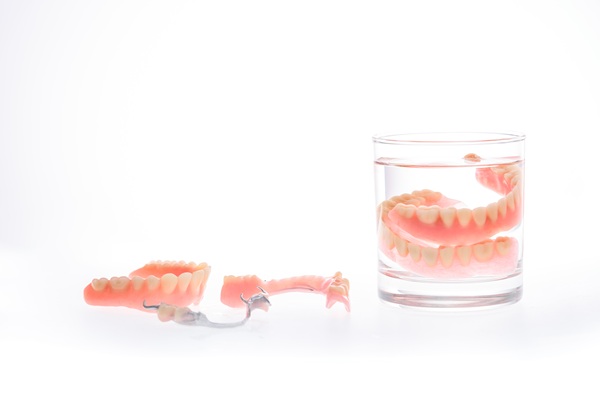Ask a Cosmetic Dentist: Bonding vs. Veneers

Choosing between dental bonding and porcelain veneers becomes easier when a cosmetic dentist outlines the benefits, limitations, and long-term value of each option. Many adults today seek smile enhancements that are both natural-looking and durable, but understanding which treatment best fits specific goals can feel overwhelming without professional input. A cosmetic dentist considers factors such as enamel health, lifestyle, aesthetic preferences, and even budget before recommending a personalized plan.
What is dental bonding?
Dental bonding is a tooth-colored composite resin used to reshape tooth edges, close small gaps, and camouflage chips or discoloration. It preserves enamel because little to no reduction is necessary. Treatment often finishes in one visit and works well for subtle changes. Bonding is versatile, repairable, and budget-friendly, but it may stain over time and does not resist heavy bite forces as well as ceramics.
What are porcelain veneers?
Dental veneers are thin ceramic shells that cover the front surface of teeth to change color, shape, and proportion. They deliver translucency, lifelike texture, and strong stain resistance. A minimal amount of enamel reduction creates space for the veneer and helps it seat securely. Veneers suit darker discoloration, asymmetry, minor crowding, or broader smile makeovers. Since ceramics are strong and color stable, they maintain aesthetics longer than composite materials with consistent home care.
How a cosmetic dentist helps patients choose between bonding and veneers
A cosmetic dentist evaluates facial proportions, gum contours, and phonestics, then designs a smile that fits natural features. Mockups and digital previews allow patients to see likely outcomes before treatment begins. This greatly reduces guesswork and aligns treatment with goals.
Durability, reversibility, and time
Composite bonding typically lasts three to seven years before polishing or replacement. Veneers often last a decade or longer with good hygiene and regular dental checkups. Bonding is generally reversible and easy to modify, while veneers are a long-term commitment because they require preparation. Time matters too. Dentists can complete bonding in a single visit, while veneers require scans, custom fabrication, and a second appointment.
Comfort, sensitivity, and tooth structure
Both options prioritize comfort with local anesthesia when necessary. Bonding keeps almost all enamel intact, which helps minimize sensitivity. Veneers require conservative shaping, but careful planning and modern ceramics protect tooth structure and gum health. A cosmetic dentist reviews sensitivity history, bite patterns, and enamel thickness to prevent surprises.
Cost and value
Bonding usually carries a lower upfront fee per tooth, making it attractive for small touch-ups or limited areas. Veneers cost more because of laboratory artistry, custom shading, and longevity. Evaluating cost per year of service often narrows the gap. When a broader transformation is the goal, veneers may provide the most efficient path to uniform color and symmetry.
Care and maintenance
Daily brushing with non-abrasive toothpaste, consistent flossing, and professional cleanings preserve either option. Avoid chewing ice, opening packages with teeth, or frequent exposure to dark liquids without rinsing. Night guards protect both bonding and veneers for patients who clench or grind their teeth.
Schedule a consultation with a cosmetic dentist
Bonding and veneers both enhance aesthetic appeal and function when thoughtfully planned. Bonding excels for conservative, affordable refinements, while veneers shine for durable, high-impact aesthetics. If you are ready to partner with a St Petersburg cosmetic dentist and receive a personalized smile makeover plan, contact Bay Dental Associates: Aaron Moneyhan DMD, PA and schedule a consultation.
Request an appointment here: https://www.baydentalfl.com or call Bay Dental Associates: Aaron Moneyhan DMD, PA at (727) 823-2007 for an appointment in our St Petersburg office.
Check out what others are saying about our dental services on Yelp: Cosmetic Dentist in St Petersburg, FL.
Recent Posts
An experienced cosmetic dentist spends much of their time repairing the damage that results from tooth decay. Hundreds of patients and many years of practice afford cosmetic dentists intimate knowledge of different tooth restoration techniques, giving them the instinct and ability to choose the ideal dental restoration for every possible scenario.Two such restorations are inlays…
Cosmetic dentistry is focused on improving the form and function of teeth. One of the main aspects of this field of dentistry includes reshaping teeth that are uneven. There are a few cosmetic dentistry procedures that can be done to reshape certain teeth so that they appear more even and aligned with their surrounding teeth.…
A smile makeover refers to a procedure or multiple procedures that are done to improve the aesthetic and appearance of the teeth and gums. Cosmetic dentists perform smile makeovers on individuals who have a wide range of problems, from issues such as crooked teeth to simpler things like enamel stains. Regardless of the severity of…
Visiting a new dental office for the first time can feel exciting and a little uncertain. Knowing what to expect can help make the experience smooth and stress-free. A first visit is a great opportunity to meet the dental team, discuss concerns, and help patients feel confident about their dental care.The front desk team usually…


